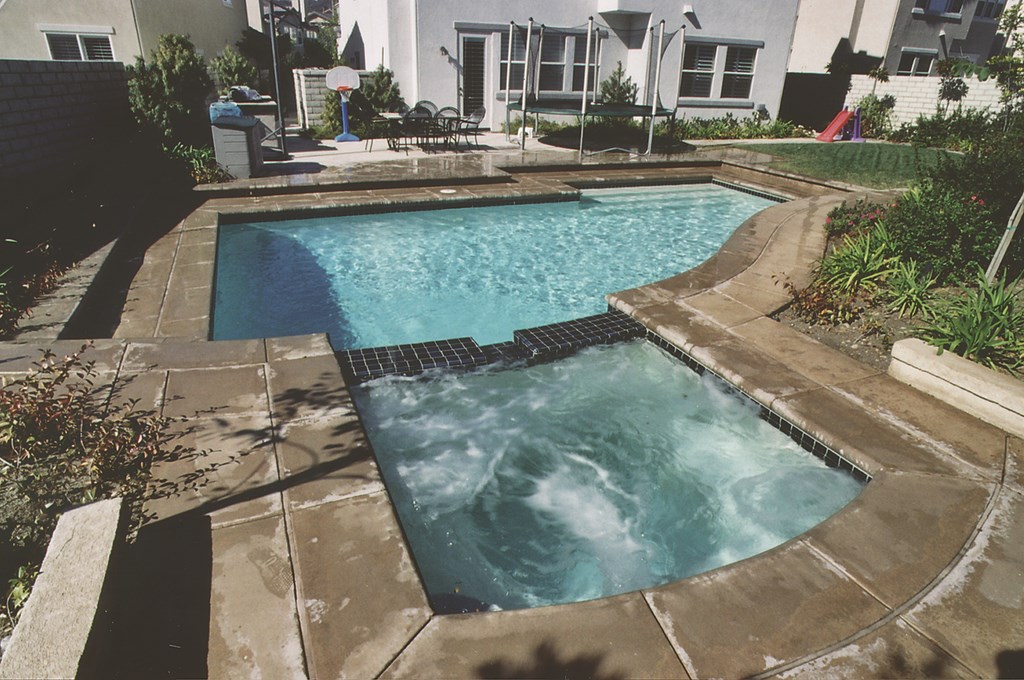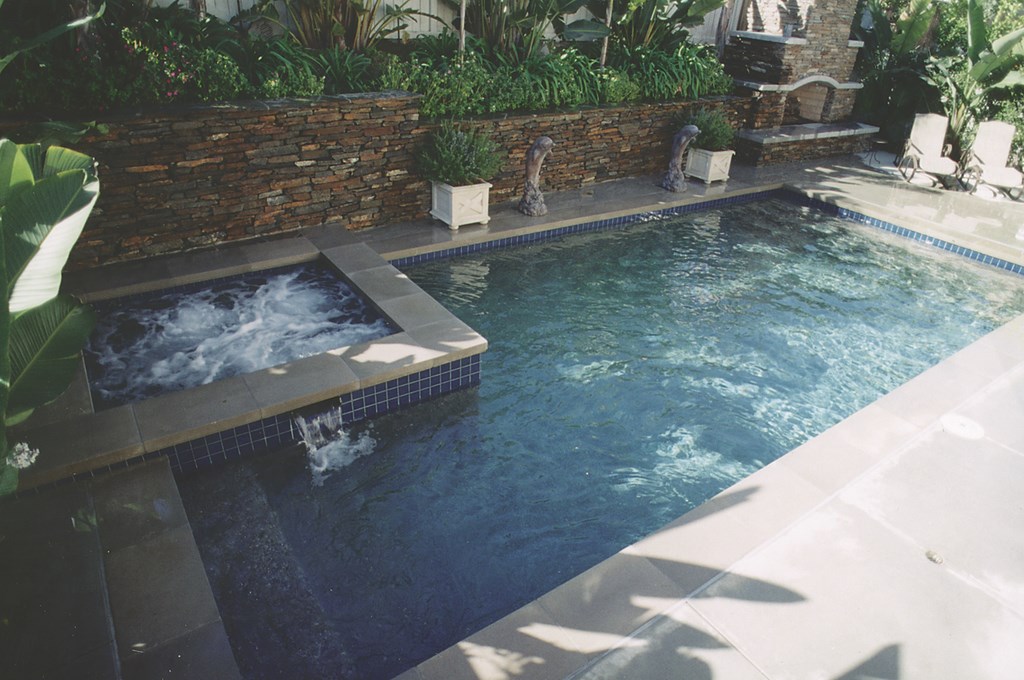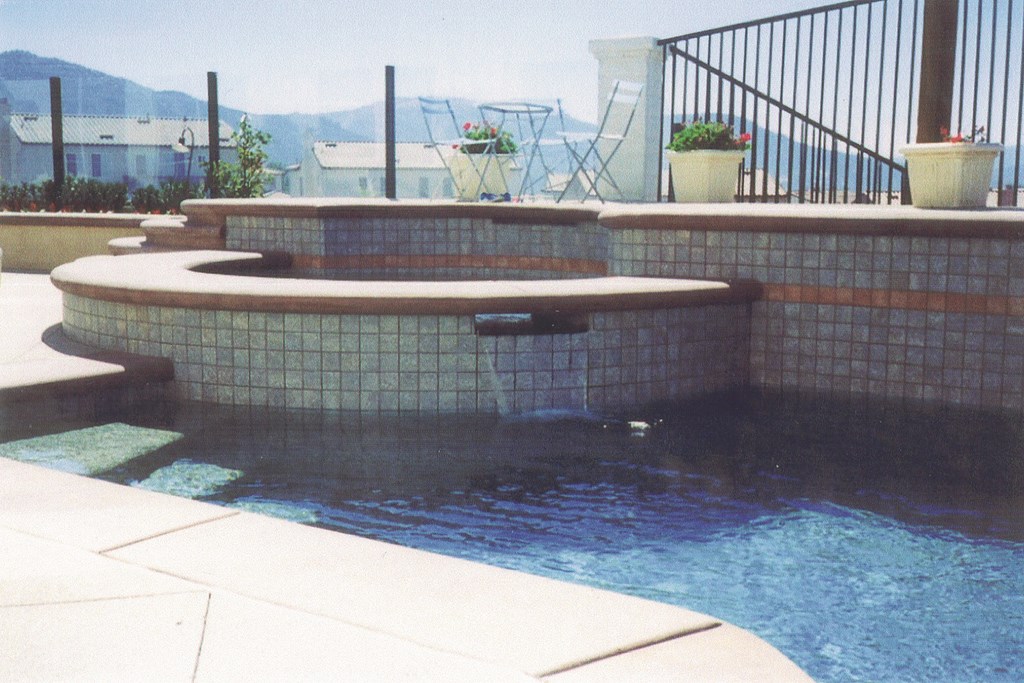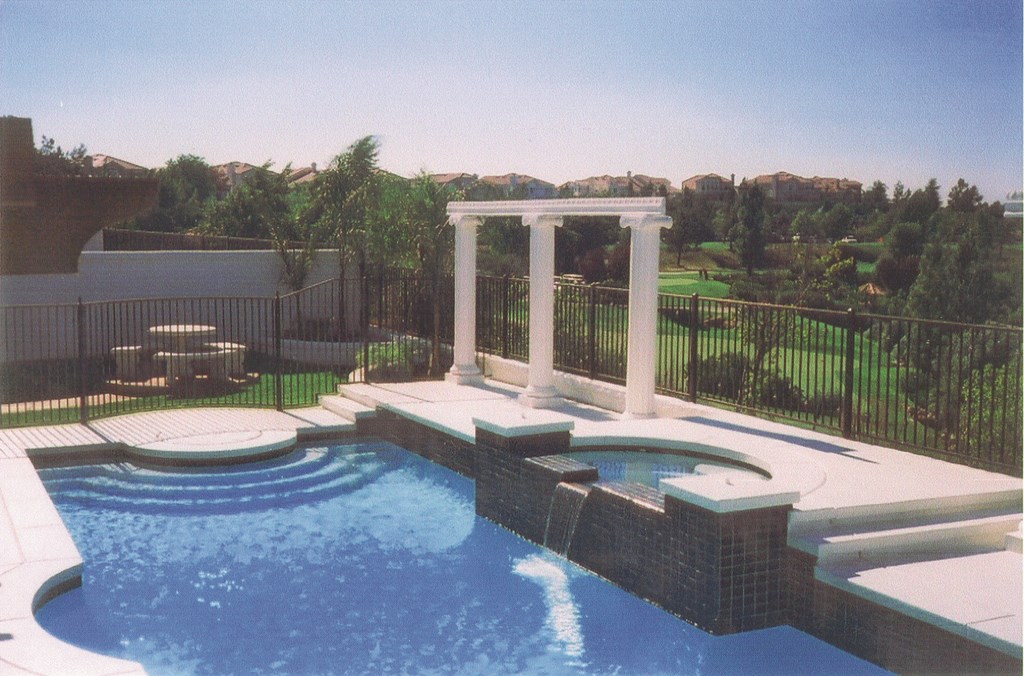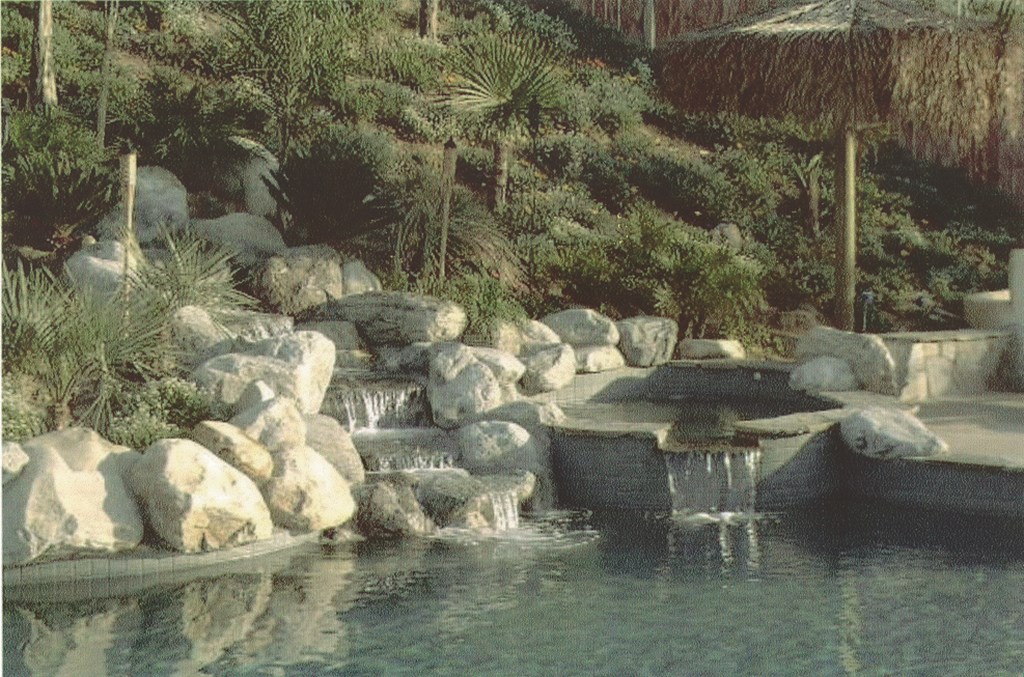Core Value
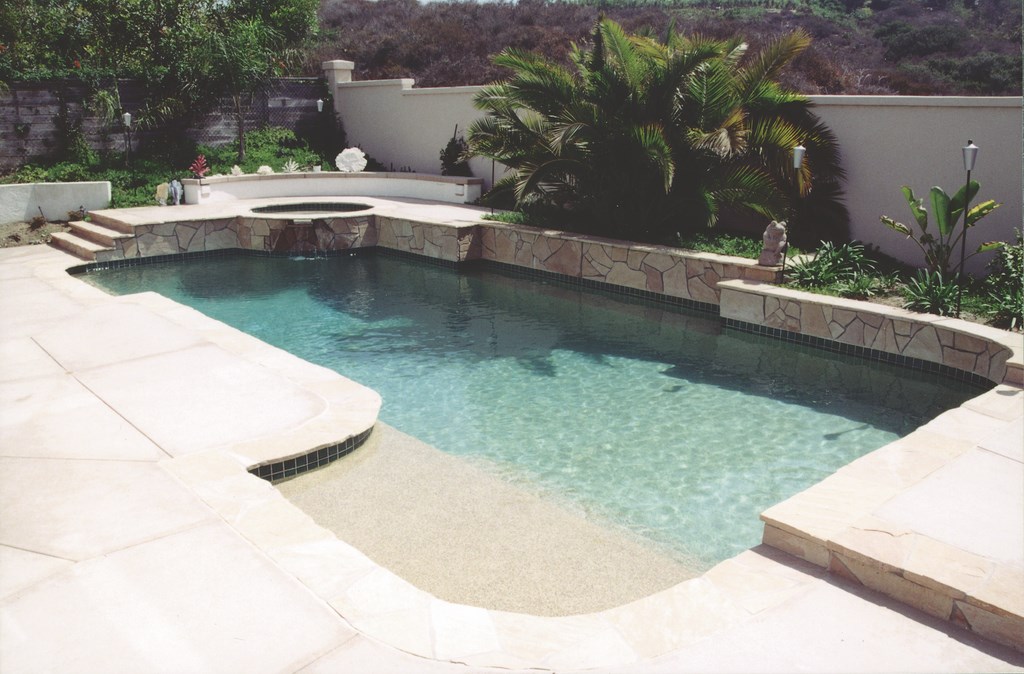
To my way of thinking, even a so-called average swimming pool is a wonderful thing.
It’s a product we place in a backyard for the long haul, a product that provides an ongoing recreational experience, operates reliably, enhances lifestyles and adds to property values while offering quality family benefits. With that in mind, I firmly believe that we as an industry must collectively make the decision that there’s no place for second-rate construction.
“Bargain construction” doesn’t work in our industry simply because of the expectations of the people making the purchases. Even for mid-range or mid-level pools, you’re still talking about consumers spending tens of thousands of their hard-earned, after-tax dollars.
In our market in Southern California, for example, in-ground gunite pools with attached spas, decking and some modest landscaping go for a minimum price of $30,000. That’s good money – and these consumers want and deserve maximum value in exchange, which leaves no room for an inferior product. Just the same, competition among builders of mid-range pools can be fierce and there are a number of competent builders challenging you for “the sale” daily.
It’s the same, old song: To stay in business, you have to compete on price. Or do you?
MAKING COMMITMENTS
As a firm that’s been in business for more than 40 years in a highly competitive marketplace, we at Mission Pools have reconciled the need to remain competitive on the one hand with the need to provide quality products on the other. We’ve made it work through by combining an understanding our margins and what it takes to remain profitable on the one hand with the application of our experience while maintaining a set of quality standards for our products on the other.
These are equations that will work a bit differently for every company working within the watershaping world. No matter which balances are struck, we all have to strike them in our own ways. And these issues of profitability and quality are, of course, huge. To get a handle on them, let’s start by stepping back to look at the big market picture.
Products such as backyard swimming pools and spas, which is what we mostly build in distinction to other kinds of watershapes, are attainable in this country largely because of the combination of our wonderful work opportunities with an extraordinary banking system – a system where wages become bank deposits which support loan requests that turn into purchases that enhance lifestyles. No wonder our system is the envy of the rest of the world.
| ‘Our consumers are making very deliberate choices when they decide to buy our pools and spas for their families. They’ve decided to underwrite a lifestyle they’ve chosen for themselves and their children and grandchildren.’ |
Our consumers are making very deliberate choices when they decide to buy our pools and spas for their families. Their choice to allocate a portion of their monthly income over a period of many years for the broad set of benefits they seek to attain through pool and spa ownership keeps us in business. Put another way, they’ve decided to underwrite a lifestyle they’ve chosen for themselves and their children and grandchildren.
This long-term commitment is based upon optimism and confidence in the future – and none of that meshes at all with short-term approaches to installing our products!
When you consider the weight of that decision and how it relates (or should relate) to the quality of the product, we quickly see that doing things such as under-sizing the plumbing, cutting corners on the basic structure or leaving out what really should be standards for every system (such as lights or properly sized equipment) is ultimately a dead-end road.
As a result, any discussion of quality as it relates to pools and spas should begin with the categorical rejection of a degraded or compromised product. That is simply all there is to the discussion.
By the same token, taking on the responsibility of delivering a quality product is a huge commitment on the part of the contractor. In my view, it’s a commitment that takes place not only in the short period in which construction happens, but also for all the years the vessels are filled with water – and regardless of warranty periods.
THE RUB
To my mind, any quality builder ought to be willing to provide substantial warranties and services needed to take care of what is basically a mechanical, engineered system. If you provide this long-term, quality recreational facility for someone’s home, you should be paid for your efforts. In other words, you should earn a profit.
What I find amazing is that, all too often, people in this business come up with a set of operational balances that minimizes or eliminates the ability to that profit – while keeping them from delivering a quality product. Of course, no one will admit to that as an overt business strategy, but this in fact is what’s happening.
It’s happening every time we hear contractors say that they need to keep pushing prices lower to meet the competition. But when you back up and look at the product in terms of costs and margins, it’s easy to see why working with reduced pricing leads nowhere in a hurry.
For the purposes of discussion and illustration, let’s strip a pool down to its bare essentials – no bells, no whistles, no spa. In my market area in Southern California, any reasonable and fair analysis of this product shows that you’re never going to drop much below the $20,000 mark, and I suspect the same is true in most other markets.
| ‘To my mind, any quality builder ought to be willing to provide substantial warranties and services needed to take care of what is basically a mechanical, engineered system.’ |
I’d suggest that any contractor anywhere would be hard pressed to run a company and a business if he or she isn’t making at least a 20% gross profit above direct costs. With these barebones, $20,000 pools, that’s $4,000. You might think to yourself that if you go out and sell 100 of these projects, you’ll be making some good money – but that’s when you need to stop and consider what comes out of that four grand!
Everyone’s business is a little different, so the money will get split up in various ways, but there are some things we can say will be on the punch list for sure – including leases, utilities, phones, office supplies, wages, insurance, vehicles, fuel, maintenance and more. One item that comes out of that profit margin, for instance, is advertising. This is a huge variable: Some companies do very little advertising, while others live by it in one or more of its forms – cable-television ads, print ads, direct-mail marketing, community participation or charitable works. If nothing else, you’re in the Yellow Pages, which at a minimum has a substantial cost.
A significant item can be warranty costs – those things that aren’t covered by a product manufacturer but that you still have to go out and take care of for the client. In our company we call these “completed pool costs” and spend money underwriting a “Craftsman Tool” type of all-inclusive warranty that says, “If it’s broke, we’ll fix it. And if we can’t fix it, we’ll replace it.”
Then there are “non-cash” costs such as depreciation, a very real charge against gross profits that typically hits hard when equipment is replaced. And an absolutely important cost to the project is supervision. Even if you supervise all of your jobs personally, your time has a cost associated with it including your benefits and vehicle expenses. And if you hire someone to do it for you, quality supervision cannot be purchased at discount prices!
NARROWING MARGINS
When you stop and think about it, you have to accomplish a great deal with that gross profit margin. And if you’re being realistic, you have to cover it all at values that are realistic to your marketplace. When you get done with that exercise, I would suggest that even the best of contractors don’t make more than 5% to 6% – and that’s before paying taxes.
I acknowledge that in an industry such as this one, with all the variability resulting from local climate and economic conditions, it’s awkward to make blanket statements about what a given company should and shouldn’t be making. Interestingly, however, when you look at a range of business models – restaurants, manufacturing concerns and all manner of service industries – it’s amazing to see how often the real, all-things-considered net profit margin falls somewhere in the 5%-to6%-pre-tax range.
Assuming this holds up for much of the pool business, that means that the company building a $20,000 swimming pool stands to make a slim $1,000 on the project. That’s all you have left when you’ve met the commitment to quality construction and customer service required by consumers spending what they see as a significant amount of money.
| ‘The smart path is clear: Build the structure above minimums, plumb the pool correctly, specify equipment of the proper size and, in general, don’t skimp and cut corners to save a few dollars.’ |
I don’t care how good you are at watershaping: It’s not that difficult to spend some of that $1,000 for anything from weather problems to installation problems on even a basic project. You may work like crazy to nail every detail square on the head, but when you work in the real world, things happen. At this barebones level, it means your “profit” can disappear in a heartbeat.
And even if you get by without making too many mistakes, you’re still going to see changes in costs for items such as fuel, insurance, wages, taxes – the list goes on and on. In our area, for example, we recently saw a quarter-cent increase in the sales tax – and had dozens of projects on the boards that did not include an increase that will cut into our margin on those projects. That’s the real world, and it’s all part of being in business.
As pressure increases on the gross-profit end, it’s natural to start taking a look at the “other” 80% and at your direct costs. This encompasses expenses related to sales compensation, permits, excavation, steel, plumbing, forming, concrete, coping, tile, plastering, start-up materials and everything else. With a $20,000, barebones pool, you have $16,000 to spend.
Some costs, such as permits or engineering, just cannot be altered. What happens beyond these types of costs is a walk on the razor’s edge, and all too often the response is a quest to build at bare minimums or to find corners to cut – and not in the fat but in the muscle of the pool’s construction, including steel, plumbing or equipment.
If you build enough pools and you compromise in these construction phases, I suppose you’ll make a little bit more short-term money – or so the story goes.
NOTHING BUT PROBLEMS
Trouble is, these sorts of compromises will eventually result in problems. And it’s not a matter of if they will: It’s just a matter of when.
Consider the steel that’s used in swimming pool and spa shells. We all know (or should know) that the design of a gunite shell is based on minimum engineered construction schedules. Yet we all know that there are people out there who save dollars by building to that bare minimum. Hey, it’s buried in the ground and virtually invisible – so who’s going to know the difference?
This compromise might make sense to someone trying to push an extra dollar or two toward the profit column, but what happens when there’s a structural failure of some kind? The potential cost of correcting a catastrophic situation is practically limitless, and I guarantee it’s going to eat away at the bottom line far more dramatically than putting in additional steel ever could have. Basically, steel is cheap and provides insurance against structural problems that can literally destroy a reputation and, potentially, one’s business.
| ‘Fighting price wars for “entry-level” projects is akin to being lured to the rocks by the Sirens’ song: It sounds good in the moment, but following your impulse is a prescription for ruin.’ |
In one way or another, you’re going to find similar long-term-benefits vs. nominal-short-term-gains with just about every aspect of the pool’s basic construction. Savings from under-sizing the plumbing, for example, will be swamped by the cost of replacing failed equipment and the anger of the client who has to live with a noisy pump and high energy bills. We see similar problems with improperly sized or poorly installed equipment sets, poorly applied finish materials – you name it, those short-term savings end up being bludgeoned by the long-term liabilities.
The smart path is clear: Build the structure above minimums, plumb the pool correctly, specify equipment of the proper size and, in general, don’t skimp and cut corners to save a few dollars. Put a different way: Build the product properly and you’ll have a positive result in ways that are too numerous to mention including consumer satisfaction and sales referrals. But cut corners and you may find trouble in ways that are too abundant to predict.
Unfortunately, we all know that the pressures of competition tend to create an atmosphere in which clear thinking becomes distorted and cutting corners starts to make sense through this distortion. Those pressures form a rationalization for pulling back on quality, but the truth of the matter is that the margins on these low-budget projects may be just too hard to hit and the competition really only serves to push you over the edge into a mode of doing business in which you do nothing but invite more problems.
This is why the lower end of the market is so unstable, so volatile. The ultimate solution is to find ways in which you’re not competing on price.
HAPPY FEET
This, of course, is far more easily said than done.
In our market, for example, we inevitably watch the price-war mentality well up from some contractor or other in the pre-season – the late-winter/early-spring months. This is when you see salespeople moving around between companies in a process I affectionately call “happy feet”: What happens is a new person will sign on with a company and immediately do whatever it takes to get business going and start the dollars flowing.
That person is going to be as aggressive, competitive and, yes, as cutthroat as is necessary to bring in some commissions. There is no thinking about quality or consideration for the long-term ramifications of discount selling. He or she is simply trying to earn a buck. (You also see this sort of “action” with companies on the brink of collapse as they do whatever they need to do in order to generate cash flow, even if it’s not profitable cash flow.)
| ‘There are no practical upper limits to what tile, coping and interior finishes can cost, but when we’re talking about mid-range pools, it’s likely that these features won’t be the most expensive of the available choices.’ |
I know there are people in this world who argue that it is an acceptable business practice to sell products at cost, simply for the sake of establishing cash flow. That loss-leader mentality may work in retailing, but it’s never made any sense to me in construction because the second you look at your business with a long term view, you see that working for no profit will always catch up with you in unpleasant ways.
Fighting price wars for “entry-level” projects is akin to being lured to the rocks by the Sirens’ song: It sounds good in the moment, but following your impulses is a prescription for ruin. There can be no personal satisfaction in giving away your talents and your production.
Through the years, we at Mission Pools have learned that you need to know your costs and be willing to take a firm stand on both price and quality. Some may argue that in doing so, we’ve sent some people to the competition – to which I say, good riddance! In fact, I’ve found that when you establish a firm line of pricing that supports quality, most of the prospects you lose are those who are looking to fight and argue over every nickel and dime – the same people who will drive you craziest with their consistent expectation of more and more for less and less. And you do this just so you can say you built one more pool then your competition?
In other words, there’s no true downside to sticking to your vision if that vision is to build only quality. Wouldn’t you really rather compete on a quality level without bargain-basement pricing?
WHERE IT COUNTS
A quality swimming pool for a mid-range client may not have all the bells and whistles and sizzle you’d like to build into it, but a quality product will still have what it takes to be highly functional and reliable for years into the future while providing fun for the whole family. And for all that time, it will reflect well on you and your company.
This is a personal decision we as contractors all have to make about how we want to be perceived by our customers, our employees, our competitors and even ourselves. Unfortunately, in a competitive world where the product is too often discounted, the new buyer believes that bargaining is expected as part of the sales phase of buying a pool – which may be driving away those who might have been good, quality-minded clients for your firm because of a sales reputation you may have created by consistent discounting. I truly believe most prospects don’t enjoy the mud-wrestling mentality associated with discount-selling techniques.
|
Standing Up for Quality We at Mission Pools have always believed that quality and profitability are completely compatible, and we have been fortunate through the years to have that belief reinforced by our membership in an organization of like-minded contractors. Indeed, I’ve always enjoyed the fact that when it comes to issues of quality and construction, my fellow members of the Master Pools Guild are at the top of the poll. Proper structural engineering, sound hydraulics and top-flight construction practices are a given with these companies. The Guild has 90 members in the United States, Canada, Mexico, Australia and Spain. For more than 35 years now, members have been selectively recruited based on their skills and ability to bring high levels of craft to the Guild while sharing methods, techniques, material uses and successful business practices through member discussions. In an industry that has been plagued by substandard operators in so many segments, I’m proud to belong to this organization because of the standard of quality maintained by its membership. Additionally, we are motivated by the level of competency within the Guild’s membership to continue our company’s improvement and keep raising the “bar of quality” for our production. — G.B.D. |
Looked at objectively, what we have here is a vicious cycle – and a frightening concept for me as a businessperson. In the real world, I’m held by competition to a fair margin, a fact that I accept. By the same token, as a businessperson I’m held by my commitment to my clients and the product itself to maintain a standard of quality that does not waver. It’s what I do to ensure my company’s integrity and reputation in our various markets.
For our firm, quality in terms of swimming pool and spa construction can be broken down into a number of specific categories:
[ ] Excavation: We dig the pool so it has the appropriate depths and contours for the desired use pattern. Whether it’s a lap pool, a diving pool or a game pool, we dig it to maximize utility and create the dimensions and lines required by the design.
[ ] Steel: We implement steel schedules that are designed to sustain structures that are going to support our lifetime structural warranty.
[ ] Plumbing: We treat the veins and arteries of the pool with respect, creating velocities and head pressures that are congruent with the specifications of the equipment. That means appropriate sizing, and it also means proper placement of equipment relative to the pool as well as installing sufficient numbers of returns and suction points for operation and safety.
Our area’s plumbing subcontractors charge by the foot, and you can directly see an increase in cost per foot based on the size of the pipe that makes it tempting to downsize here. But if you study pump curves, head pressures, friction losses and velocities, then you know there is only one right way to size valves and fittings and put the puzzle together in a way that makes everything work. If you don’t do it that way, the system will never function properly and your client will be stuck with it.
[ ] Gunite or Shotcrete: There are many different opinions on appropriate shell products, but gunite and shotcrete have very specific mix designs that provide installers with shell structures that have particular levels of strength relative to given engineering requirements. This is an area where I really wonder why anyone would ever opt for a minimum installation schedule.
[ ] Electrical: Control systems, switch locations, the use of time clocks and installation practices in absolute compliance with the National Electric Code (and all local codes as well) are absolutely essential to quality pools and spas. In a mid-range pool, this may mean we won’t be installing a high-end, low-voltage control system, but it does mean that we’re giving the customer a basic level of convenience and an ability to control the system – and the ability to upgrade and add more sophisticated controls in the future. In addition, proper grounding and bonding along with proper use of conduit and electrical boxes are all important for safety and the service life of the system.
| ‘Hitting the mark means that clients will be more likely to have positive experiences with their investments, which means they’ll be more likely to reflect positively on their decision to purchase a pool and spa and therefore will direct referrals to your business.’ |
[ ] Lighting: Certainly, you can spend a great deal of money on lighting, but in terms of a baseline, we believe all pools should have some form of lighting that enhances the use of our product.
[ ] Aesthetics: There are no practical upper limits to what tile, coping and interior finishes can cost, but when we’re talking about mid-range pools, these features usually won’t be the most expensive of the available choices. Whatever the cost, however, they should be installed correctly and to last. This is where you “dress for success”: Marrying your coping, decking, tile and plaster materials with crisp, clean, quality standards will ensure your project’s success.
[ ] Start-up: This is a significant item that contractors often ignore or cut from the process. The fact is, a pool needs to be filled and its chemistry managed as the system comes on line, and it needs to be handed off to the homeowner as well with clear and informative instructions – as many times as necessary!
We go through a step-by-step checklist that prepares the homeowner to use the system, enjoy the pool and know what to do if something goes awry. This means taking the time to answer questions, providing information on safety and maintenance and generally being available for clients when they need advice or encounter difficulties.
SET FOR SUCCESS
If you’re already building a quality product, the list above probably seems fairly obvious. But if it sounds in any way unrealistic, then I suggest it’s time for you to rethink the way you’re doing business, because your competition is about to eat your lunch.
These are all places where quality cannot be sacrificed for the sake of profit. Hitting the mark means that clients will be more likely to have positive experiences with their investments, which means they’ll be more likely to reflect positively on their decision to purchase a pool and spa and therefore will direct referrals to your business.
| ‘Bargains may be nice when you’re shopping for groceries, but they surely don’t fire the imagination or make for much by way of personal inspiration when it comes to pools and spas.’ |
Experience has shown us that even the most basic pool or spa provides a great deal of excitement to homeowners who are proud of what they have. When the system is designed, engineered and installed based on a quality standard, there are fewer things to distract them from the pleasures of the aquatic experience.
Personally, I don’t believe that getting the lowest price possible is the fundamental urge for too many people interested in having pools of their own. Bargains may be nice when you’re shopping for groceries, but they surely don’t fire the imagination or make for much by way of personal inspiration when it comes to pools and spas. Our clients look at the purchase with a long view toward the pleasure it will provide for years to come, and so should we.
The bottom line is that there is no real secret to building quality in the mid-range market: You simply have to hold your ground on key issues, especially when competition heats up. In our business, for example, we won’t install a pool or spa that is compromised in ways we know will hurt the product and/or our business over the long haul. If a client isn’t willing to pay a price that enables us to provide quality, then we don’t get the contract. It’s as simple as that. After all, who cares about the number of pools you build: You can’t build them all and probably don’t want to!
In all candor, it’s hard not to know when you’re fudging: Most of us know quality when we see it, and we all should certainly know it when we seek to create it.
G. Bruce Dunn is owner and president of Mission Pools of Escondido, Calif., a swimming pool and spa construction firm with satellite offices in St. George and Salt Lake City, Utah; Temecula and Lake Forest, Calif.; and San Jose Del Cabo, Baja California, Mexico. He holds a Bachelors of Science degree in engineering and business from California Polytechnic State University at San Luis Obispo (1971) and is a graduate of Harvard University’s Graduate School of Business (1992). Among his many business and community activities, Dunn has served as chairman and director of the International Master Pools Guild, chairman of the California Swimming Pool Educational Council and on the board of directors of San Diego’s Boys and Girls Club of Inland North County. Established in 1960, Mission Pools employs 190 people and has built more than 11,000 pools, spas and waterfeatures for residential, commercial and municipal clients. The firm has won more then 800 industry awards for excellence in design and construction.











